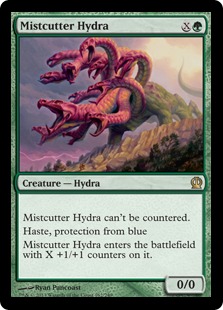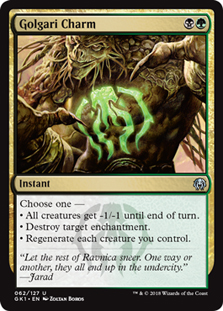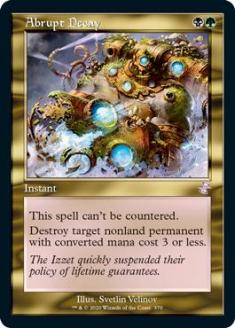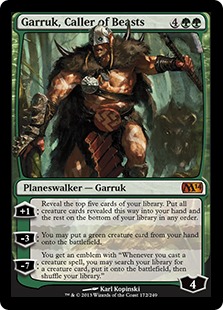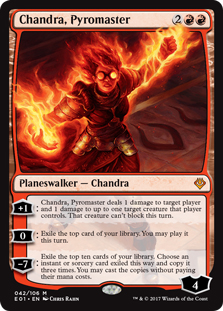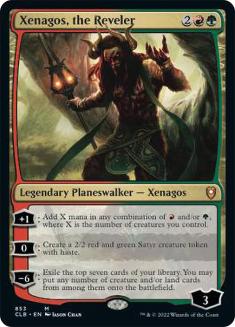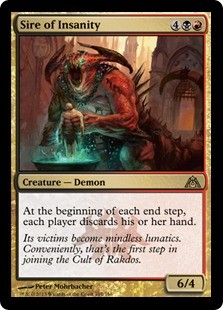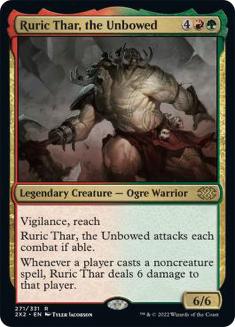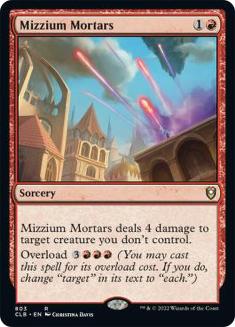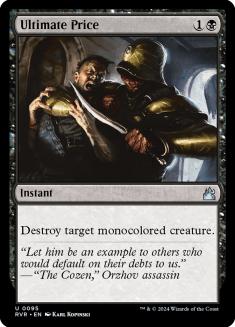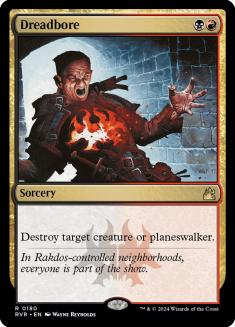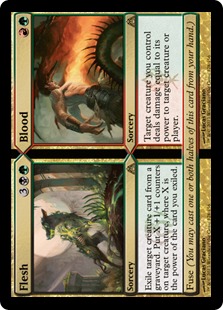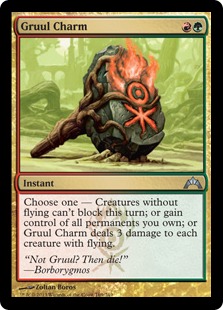Season One on the road to the SCG Players’ Championship is quickly coming to an end, and with one only one Open Series weekend left before the Invitational in Charlotte takes place in two weeks, we have a real race for first place.
This past weekend Brad Nelson, Brian Braun-Duin, and I spent a couple days in North Carolina playing in a Super IQ and a regular IQ. We may already be qualified for the Invitational, but the Open Points are extremely valuable since there are so few separating the four of us (including William “Huey” Jensen) from the invite to #SCGPC.
While all three of us have the same goal of topping the others in points to qualify for the SCG Players’ Championship, it’s not all business all the time. Brad and BBD are still my friends, and there’s a long year ahead of us to qualify. I’m just as happy with their successes as I am with my own, as is evident by us working together on our decks for the weekend, and I even lent Brad my copy of Esper Control, which he used to win the IQ on Sunday!
Earlier in the week Huey had crushed a Premier Event on Magic Online with a U/W Control deck that splashed black for removal and Thoughtseize. This twelve Temple deck performed very well for me, and BBD worked on an awesome sideboard plan for the deck over the week. I had worked on an updated Monsters list, but I recognized that the Esper deck was very good and that I should play it, so on Saturday I did just that.
Creatures (1)
Planeswalkers (7)
Lands (27)
Spells (25)

The idea of playing Nightveil Specter in the sideboard of Esper Control is no stranger to BBD. He X-0ed the Standard portion of the Invitational in Indianapolis last year with the same idea. I’m not going to go too much into how awesome it is because it was BBD’s idea and he still has an article to write for the week, but trust me when I say that it is very good.
Unfortunately, I hadn’t played enough with the deck and ended up playing just a tad too slowly. I picked up two unintentional draws during the Super IQ at Be There Games in Indian Trail on Saturday and then punted my win-and-in match at 4-0-2 in the last round. In both of my unintentional draws I had lethal on board, but my opponent’s turn was the fated turn 5. Neither could stop me from killing them, but they both declined when I politely asked for a concession.
This is a pretty controversial subject, but I feel like a lot of people don’t understand that in a lot of cases a draw is almost the same as a loss for both players (especially in the case when we were both already X-0-1 in the middle of the tournament) so it make sense if there is a clear winner for someone to concede. I know I subscribe to this line of thinking, but I also know there are others who don’t.
My first draw was with Brad in round 2, and I understand him not conceding when I asked. In fact, he was dead on board on my turn 4 of extra turns to my Elspeth, Sun’s Champion emblem and three Soldier tokens that were out, but he drew a Jace, Architect of Thought to +1 and survive a turn to make it a draw. He has a direct interest in how many points I acquire over the weekend, so if his mind state is to deny me points, taking the draw makes sense.
That being said, I was paired down against BBD in the IQ on Sunday at 4-0-1 with him at 4-1. Rather than play to try to knock him out of the Top 8, I just drew because like I said before I’m happy with my friends’ successes too.
I was pretty tilted about my performance on Saturday at the Super IQ. I felt like I had played very well, with the exception of being a little slow and punting in the last round by casting a Blood Baron of Vizkopa I stole with a Nightveil Specter rather than holding up for Gainsay in case he one-outered me and drew his Aetherling (spoiler alert: he did). It seemed difficult to lose with the deck. Having more win conditions and Thoughtseize really pushed the advantage we had in the mirror. We also had twelve Temples as I mentioned earlier, so we were scrying and finding our Sphinx’s Revelations and counterspells with more frequency.
I had brought a new build of Monsters with me and decided that I was going to play it on Sunday at the IQ in Hickory at The Dugout. In my article a few weeks ago, I talked about how I was unimpressed with the heavy black splash in Jund Monsters and suggested a straight G/R version. Xenagos, the Reveler is just so good against the Supreme Verdict decks that I don’t want to leave home without him. Ghor-Clan Rampager gives the deck a completely different element, allowing us to play like a weird combo deck sometimes and kill our opponent out of nowhere, plus Ghor-Clan Rampager isn’t a true four-drop since we get to use it as a pump spell a lot. I really love having flexible cards like that.
I’m very sure that I misbuilt my sideboard this weekend, and I’ll be working on that. I have a few other changes that I want to make, but here’s the list with which I lost in the Top 4.
Creatures (27)
- 2 Scavenging Ooze
- 4 Ghor-Clan Rampager
- 4 Elvish Mystic
- 4 Polukranos, World Eater
- 4 Sylvan Caryatid
- 4 Stormbreath Dragon
- 1 Xenagos, God of Revels
- 4 Courser of Kruphix
Planeswalkers (6)
Lands (23)
Spells (4)

The maindeck was awesome, and really the only cards that I was unhappy with were Courser of Kruphix (WHAT?!) and Flesh // Blood.
When I lost in the Top 4 of the Standard Open in St. Louis with G/R Monsters, Courser of Kruphix was surprisingly good and one of the most overperforming cards for me. This weekend however it was miserable. It’s bad in the mirror, and unlike the G/R version, with black I actually had removal that I could swap it out for. Against control decks it can provide some sort of card advantage, but I don’t think that’s how we want to attack those decks. I would much rather be more aggressive. I want something like Boon Satyr.
After we drew and were waiting for the last round to finish, I told BBD how I was unhappy with Courser of Kruphix and wanted something like Boon Satyr. I hadn’t seen any of the results from the Standard Open in Seattle, but apparently someone placed in the Top 16 with a Jund Monsters build with Ghor-Clan Rampager over Reaper of the Wilds and Boon Satyr over Courser of Kruphix.
I also built my sideboard incorrectly. Not having Golgari Charm was a criminal mistake, and I’m not sure how good Flesh // Blood is right now. I mainly wanted it for opposing Monsters decks and against decks like Mono-Blue Devotion since they don’t really have a way to interact with it, but for those decks we now have a bunch of removal that we get to bring in so it might not be necessary.
I’d like to go through my sideboard building process with everyone so that we can try to get the numbers right and to help out anyone who’s planning on running something like this at Grand Prix Cincinnati this weekend.
Here is my current maindeck to start.
4 Elvish Mystic
4 Sylvan Caryatid
3 Scavenging Ooze
2 Boon Satyr
4 Polukranos, World Eater
4 Stormbreath Dragon
4 Ghor-Clan Rampager
1 Xenagos, God of Revels
4 Domri Rade
3 Xenagos, the Reveler
3 Dreadbore
1 Mizzium Mortars
4 Stomping Ground
4 Overgrown Tomb
4 Blood Crypt
4 Temple of Abandon
1 Temple of Malice
2 Mutavault
4 Forest
I really think that Scavenging Ooze is being underappreciated in current Monsters builds. The Jund versions of old still only ran two of them. Over the last two tournaments that I’ve played Monsters to a decent finish, I’ve been overly impressed with Scavenging Ooze, so naturally I’ve gone from one to two to three copies. Post-board all of our removal spells make Scavenging Ooze a giant threat, and with R/W Burn on the rise, the life gain can be invaluable.
Building a sideboard is a very important and often overlooked part of competitive Magic. Last year shortly after returning to the Magic scene, I wrote an article about a four-step process for building an effective sideboard, and I’m going to implement those steps here.
Identify, Plan, Build, Execute are the four steps I broke down for building a sideboard, so let’s dive right in!
Identify
Here we’re going to identify what the most prevalent decks are in Standard and what cards we could potentially have in our sideboard that would be good against them.
U/W/x Control
G/R/x Monsters
Black Devotion
I like some number of Mizzium Mortars to kill Blood Baron of Vizkopa even though it’s not all that good against us and to clear Elspeth, Sun’s Champion tokens. Pack Rat can also run away with the game.
Blue Devotion
R/W Burn
White Aggro
I have left off red devotion because it is definitely a bad matchup but thankfully has fallen way off the radar.
Plan
In this step we determine what cards we have in our maindeck that aren’t all that stellar against the matchups we identified in the first step.
U/W/x Control
Polukranos, World Eater – Here it’s just a 5/5 for four mana. The body is semi-impressive, but there’s no resiliency or surprise. What you see is what you get, and I don’t really want it.
Dreadbore – Against these control decks Dreadbore is only going to be killing a Jace, Architect of Thought or an Elspeth, Sun’s Champion. That’s not too bad, but we don’t really want that many reactive cards stuck in our hand. We can expect to see some Archangel of Thune, which Dreadbore can also kill, but I still don’t think this is where we want to be, though I could be wrong.
Elvish Mystic / Sylvan Caryatid – Against the Supreme Verdict decks I usually like cutting one or two of the mana accelerants so that we can have more impactful cards. We don’t have to come out blazing all the time.
Ghor-Clan Rampager – I usually like cutting a Rampager against these decks. It’s nice to be able to punch through with a Mistcutter Hydra or to kill an Elspeth, Sun’s Champion, but we need a board presence for it to do much more than just be a 4/4 for four mana.
Scavenging Ooze – I like keeping in at least one Ooze here since it can be a threat late but a lot of times it’s just a 2/2 for 1G.
G/R/x Monsters
Boon Satyr – Here Boon Satyr just gets outclassed by every creature they have.
Xenagos, the Reveler – While awesome against anything with Supreme Verdict, Xenagos, the Reveler isn’t all that great against decks without it. It isn’t the worst since his +1 can help us get to overloading Mizzium Mortars, but that’s less important now that we have Dreadbore and Ultimate Price.
Black Devotion
Boon Satyr – I’m not a huge fan of Boon Satyr here, but it’s possible that it could be good. I know in the old pre-Born of the Gods version of the deck I cut Boon Satyr here.
Elvish Mystic – I usually like to cut a Mystic against these decks just to increase the number of threats and impactful cards in the deck.
Polukranos, World Eater – Polukranos isn’t at its best here since it just dies to so much, but we need bodies to kill our opponents so we don’t want to cut all of them.
Mizzium Mortars – I like having some number of Mortars post-board here, but I don’t want too many. Catching up if they get out in front with Pack Rat is good, and it’s an answer to Blood Baron of Vizkopa.
Blue Devotion
Xenagos, the Reveler: Here Xenagos in planeswalker form just isn’t all that great. The 2/2s aren’t going to match up well, and he’s just too slow.
Xenagos, God of Revels: Xenagos in God form is just as bad here. He’s slow and isn’t going to impact the board the turn he hits play.
Stormbreath Dragon: I feel like the Dragon is just too slow against these decks. We really want oversized bodies that can impact the board (Polukranos, World Eater) and a bunch of cheap removal.
Boon Satyr: I don’t think it’s too impressive here, but it can ambush an attacker, which might be relevant.
R/W Burn
Xenagos, God of Revels: I think we can safely cut a five-mana do-nothing against a burn deck.
Xenagos, the Reveler: I believe we can cut the planeswalker version of Xenagos here too. Against R/W Burn we are hoping that our planeswalkers can provide a diversion, and Xenagos doesn’t really do that and costs four mana.
Stormbreath Dragon: While it’s nigh impossible for them to kill our Dragon, I think that it’s a tad too slow. I could be very wrong about this though.
White Aggro
Xenagos, God of Revels: Here I think the God is just too slow and low impact.
Xenagos, the Reveler: We don’t really want a four-mana planeswalker that’s just going to die after we cast it. Soldier of the Pantheon can put a lot of pressure on here.
Boon Satyr: I don’t like that our three-mana creature is going to trade with one-drops. I would rather just have more removal.
Ghor-Clan Rampager: I think we can safely cut one or two of these since we’re going to be prioritizing killing their creatures with removal since they aren’t ever going to be blocking.
Build
Now that we have an idea of what the good cards and bad cards are against the field, we can get to building our sideboard.
The trick is to find the cards that overlap against different decks and go from there. Thankfully, this Standard basically has five pillars: Sphinx’s Revelation, Monsters, Thoughtseize, Soldier of the Pantheon, and Frostburn Weird.
We can see that there are cards that overlap against decks like Mistcutter Hydra, which is good against both Sphinx’s Revelation decks and the blue-based devotion decks.
Currently, I think the sideboard should look like this:
4 Mistcutter Hydra
2 Golgari Charm
2 Abrupt Decay
2 Ultimate Price
2 Mizzium Mortars
1 Garruk, Caller of Beasts
1 Chandra, Pyromaster
1 Sire of Insanity
Execute
Now that we have our maindeck and sideboard built, it’s time to implement our plan. Play tight, think everything through, and plan ahead for your sideboarding. You can make a “cheat sheet” to reference in between games on how to sideboard against different decks, and I highly recommend taking advantage of this.
A lot of brain power gets used during the course of a tournament, and anything you can do to streamline will only help. I’m not saying you have to always follow your plan to the letter since innovation and on the fly thinking are pretty important too, but having an idea going in to each match will help you focus on the variables.
I hope everyone found this sideboard exercise helpful, and I’d love to hear from anyone who plays something like this at SCG Standard Open: Los Angeles, Grand Prix Cincinnati, or at the local game store for FNM or an IQ.
Next week I’m going to be working on Standard and Legacy (my favorite format!) for the Invitational in Charlotte. There’s a chance I’ll be back on Delver, but who knows? Show and Tell is a pretty powerful card.

